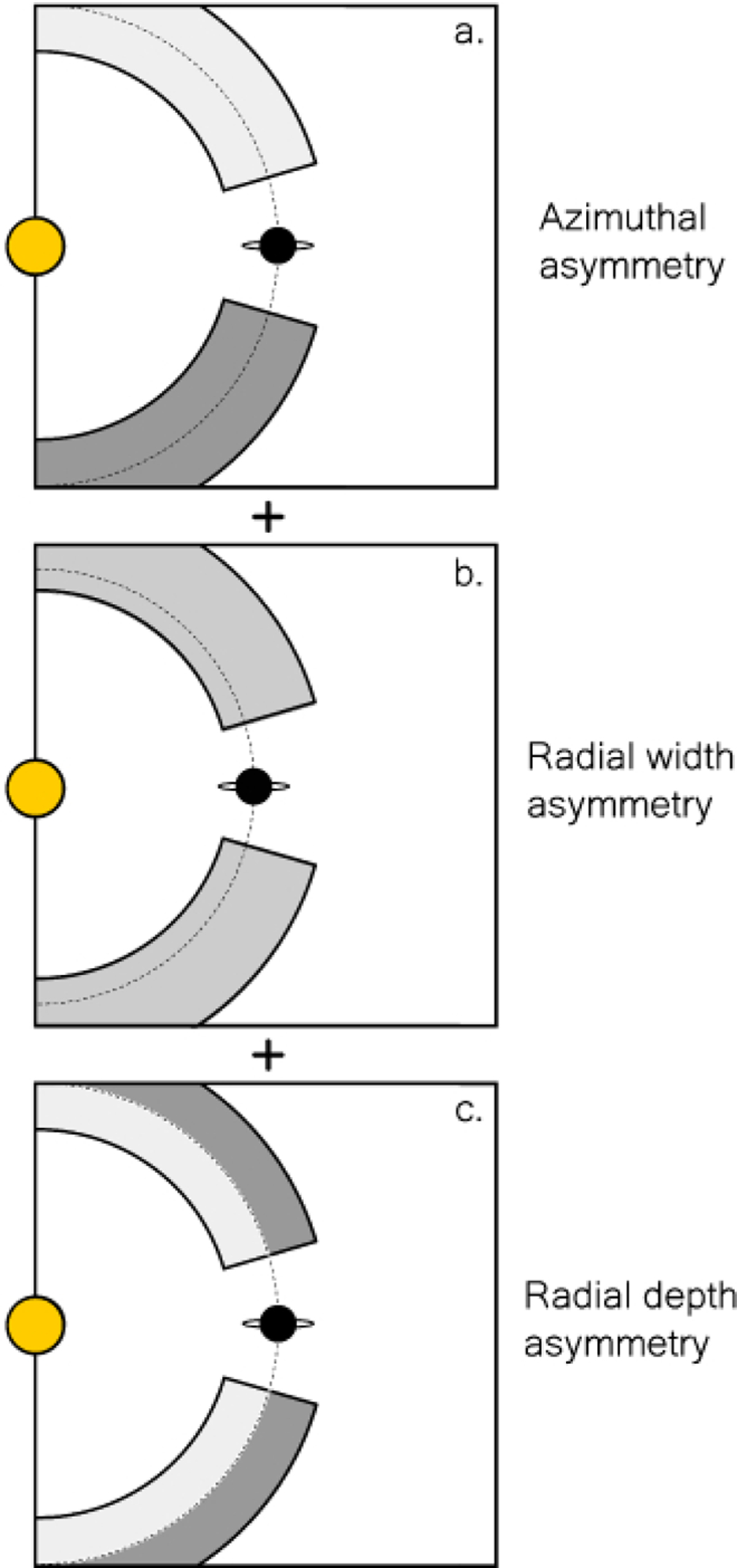Fig. 3

Download original image
Sketch of the different asymmetries of the planet gap, for massive planets and highly magnetized disks. The yellow and black circles represent respectively the central star and the planet. The horseshoe region is represented in shades of gray, with high-density zones in light gray and low-density zones in dark gray. The dashed line corresponds to the planet orbit. The global shape of the gap results from the combination of three asymmetries: (a) Azimuthal asymmetry of the horseshoe region. (b) Radial width asymmetry, with the outer gap wider than the inner gap. (c) Radial depth asymmetry, with the outer gap deeper than the inner gap.
Current usage metrics show cumulative count of Article Views (full-text article views including HTML views, PDF and ePub downloads, according to the available data) and Abstracts Views on Vision4Press platform.
Data correspond to usage on the plateform after 2015. The current usage metrics is available 48-96 hours after online publication and is updated daily on week days.
Initial download of the metrics may take a while.


